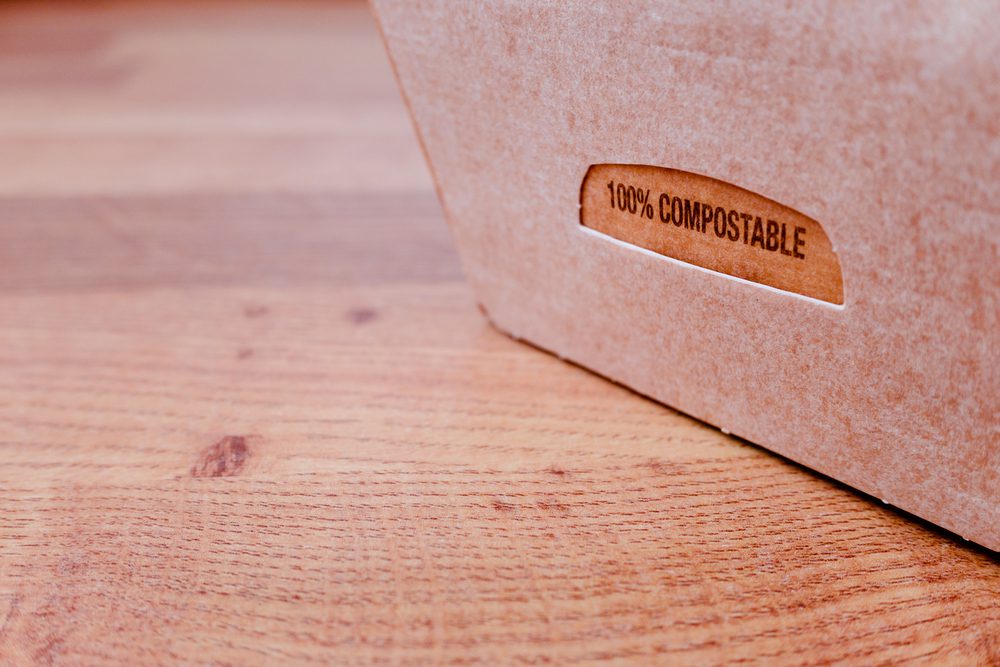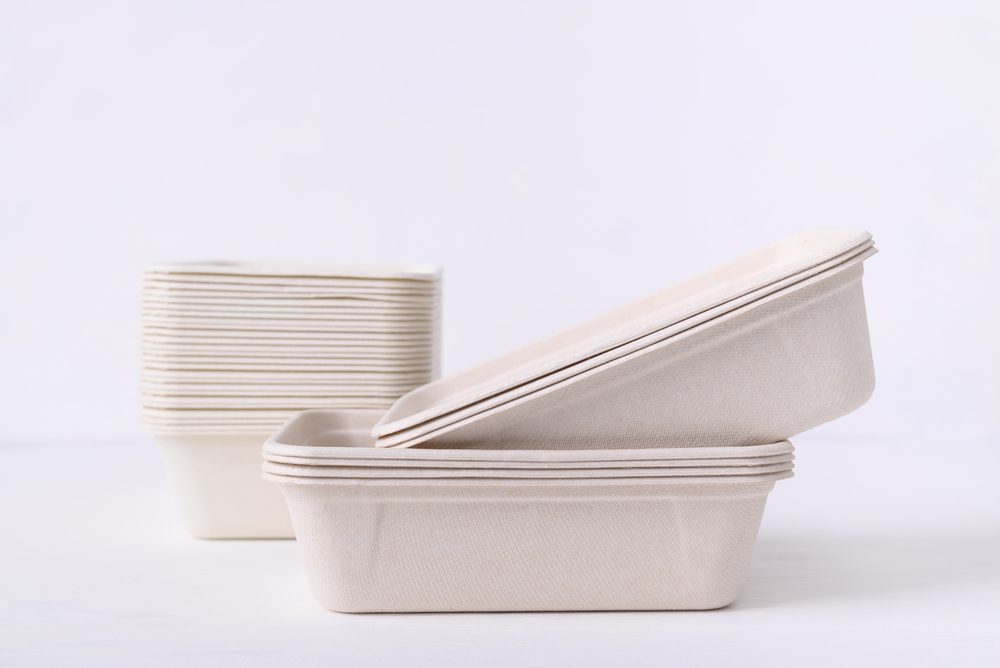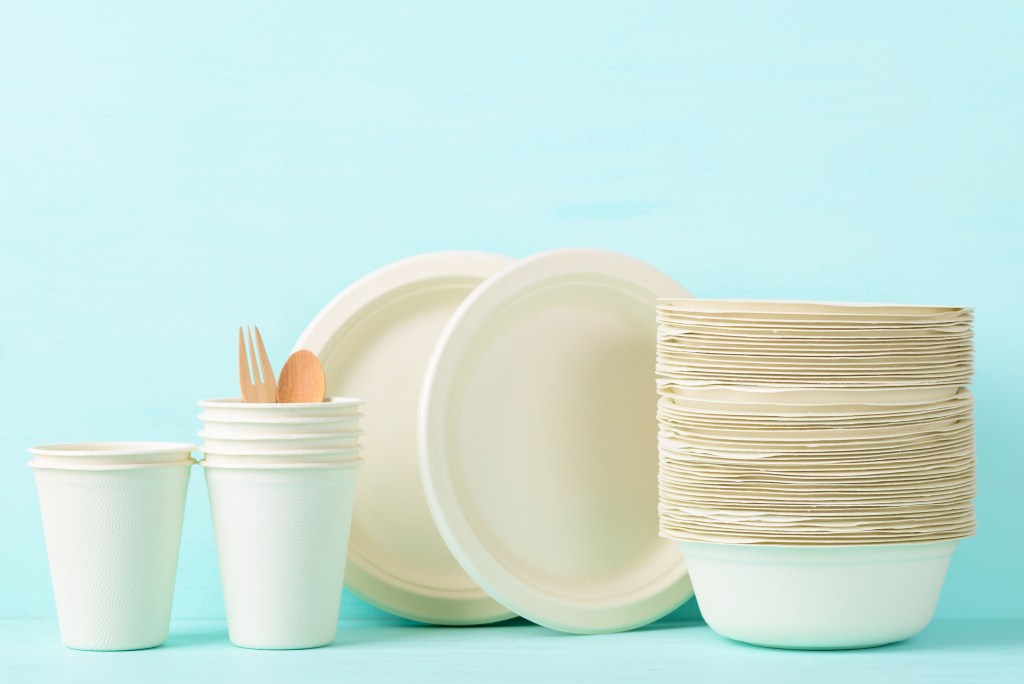Today, environmental sustainability is at the forefront of many business operations. It’s almost impossible to project a good brand image without taking environmental impact into account.
As a result, lots of businesses have rolled out initiatives or made pledges that aim to reduce their operation’s impact on the environment.
A popular initiative you’ll see across the food industry is the adoption of sustainable food packaging. But with words like commercially compostable and biodegradation, it can be confusing to navigate through the eco-friendly packaging space.
One question we get time and time again: what is the difference between biodegradable and compostable?
Today, we’re going to look at biodegradable vs compostable food packaging, why they’re different, and how to choose the right one for your operation.
If you haven’t already, check out our video Biodegradable vs Compostable Food Packaging!
Let’s jump right in and break down biodegradable packaging materials.
What is Biodegradable Food Packaging?
In simple terms, biodegradation is just a process where materials get broken down into simple, organic compounds, like biomass, carbon dioxide, and water.
So it follows that biodegradable packaging materials are just materials that break down into organic materials naturally, over time.
The process works because microorganisms like bacteria and fungi are able to break the biodegradable packaging down into organic matter that is then reabsorbed back into the earth.
While the process may sound confusing, it’s actually pretty straightforward, except for a few factors that can affect how long it takes biodegradable food packaging, or biodegradable anything, to break down.
These factors are:
- Material type
- Whether it’s processed or left in a landfill
- Temperature levels
- Light levels
- Moisture levels
- Air levels
Depending on these factors it can take anywhere from days to years for biodegradable materials to break down. For example, it can take as few as 2 months for paper to biodegrade, while a cotton t-shirt will take at least 6 months. Generally, biodegradable food packaging will break down within six months.
Pro Tip: Biodegradable packaging only truly biodegrades when it is properly disposed of. Typically, this means bringing it to a specialized processing plant that can regulate temperature, light, moisture, and air levels.
When left in a landfill biodegradable food packaging will still biodegrade, but in a process that has a more significant impact on the environment. In fact, it can take hundreds of years for something to biodegrade in the conditions of a landfill.
What is Compostable Food Packaging?
The composting process can be understood as a way for organic waste to return to the earth by recycling and reusing it.
Two important components of compostable packaging are that it breaks down within a specified time frame, often only a couple of months, and that it can decompose into natural elements without leaving behind any toxic residue.

It’s important to note that not all compostable packaging can break down naturally in a landfill. Composting requires a certain process involving the use of heat, humidity, and microorganisms to help decompose waste and convert it into biomass and other inorganic substances.
As a result, you need to check your compostable food packaging to see if it’s labeled as home compostable or commercially compostable. Unless it’s labeled as home compostable, you’ll need to bring your compostable packaging materials to a facility for processing.
Otherwise, the waste may not be able to be effectively converted into compost.
The Difference Between Biodegradable vs Compostable Food Packaging
One thing to keep in mind is that all compostable materials are biodegradable, but not all biodegradable materials are compostable.
What does this mean? It means that not all biodegradable packaging materials are able to either break down within a given timeframe, or guarantee they won’t leave behind any non-toxic residue after degrading.

It’s important to realize that compostable packaging materials only leave behind organic compounds, while biodegradable packaging materials will sometimes leave behind heavy chemicals.
In fact, biodegradable materials for packaging won’t provide the soil with anything, even if it doesn’t leave behind metal residue. Meanwhile compostable food packaging, when properly processed, creates a nutrient-rich byproduct called humus that benefits the soil.
One thing that stands out about biodegradable packaging is that its degrading process occurs naturally, whereas composting requires human intervention to be done right.
While both biodegradable food packaging and compostable food packaging will break down over time, and both require the right conditions to optimally break down, composting requires far more specific conditions. That’s why compostable packaging is generally able to break down much quicker.
The last thing to keep in mind is that “biodegradable” is an unregulated term, meaning there is no authority who decided what is and isn’t biodegradable. The opposite is true of “compostable,” which is highly regulated and there are multiple official bodies that conduct testing and provide certification.
Final Thoughts
Everyone is rushing to adopt eco-friendly solutions to their businesses, it’s not just a trend in the food service industry. But, in the food service industry, there has been a huge trend in adopting sustainable packaging.
As a result, biodegradable packaging materials and compostable packaging materials have seen a boom. While you may be eager to include one or both of these eco-friendly solutions into your operation, it’s important to know what you’re getting into.
A lot of people aren’t aware that there’s a difference between biodegradable packaging and compostable packaging until they’ve already invested in one. It’s important to know the differences so that you can make an informed decision for your business.
The right one for you depends on the needs and priorities of your operation, as well as your customers capabilities and willingness to follow proper processing procedure.
If you’re not sure which is right for you, feel free to contact one of our food service experts. You can sign up for a free consultation today and one of our experts will arrange a virtual or onsite evaluation of your operation.
At Imperial Dade, we have the food packaging products and industry knowledge you need for success, so consider reaching out to an Imperial Dade facility near you.
Check Out These Related Articles
- Best Take Out Packaging For Third Party Delivery
- Oven-Safe Disposable Food Containers 101: What Containers Can Be Used in the Oven?
- Microwave Safe Containers: A Business’ Guide [VIDEO]
- The Best Alternatives To Single-Use Plastic Bags For Your Business
- Eco-Friendly Take Out Containers: What’s the Best, Low Cost Option For Your Business
- Sustainable Food Packaging: Top Trends in Foodservice
- Commercial Composting vs. Home Composting: What’s the Difference?
- Which Common Food Packaging Products are Recyclable: A Business’ Guide
- 8 Alternatives For Plastic Straws: What’s Right For Your Business
